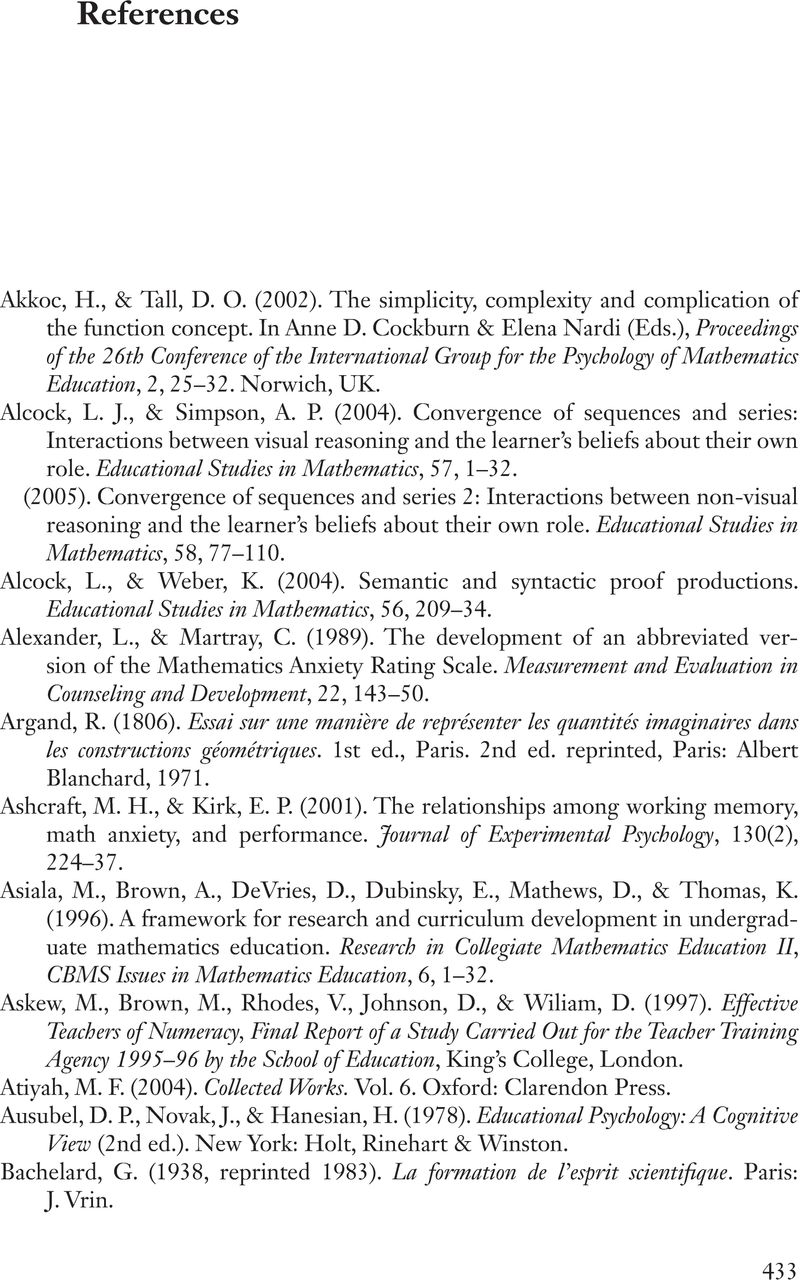Book contents
References
Published online by Cambridge University Press: 05 June 2014
Summary

- Type
- Chapter
- Information
- How Humans Learn to Think MathematicallyExploring the Three Worlds of Mathematics, pp. 433 - 446Publisher: Cambridge University PressPrint publication year: 2013

